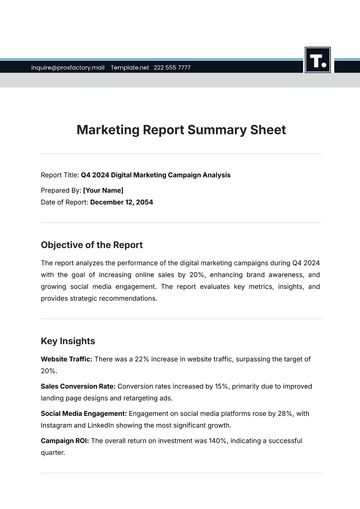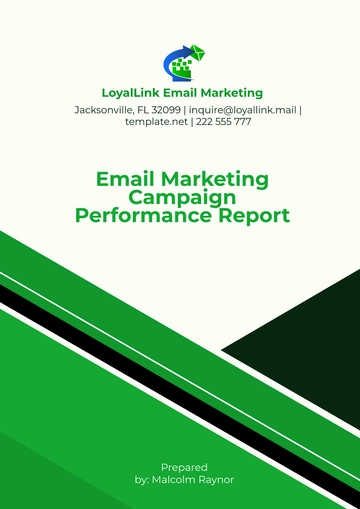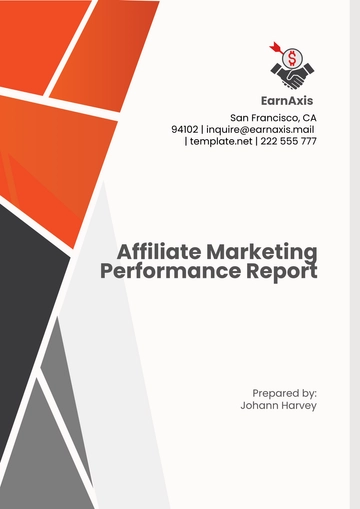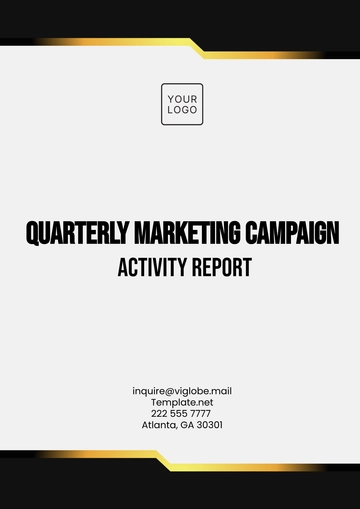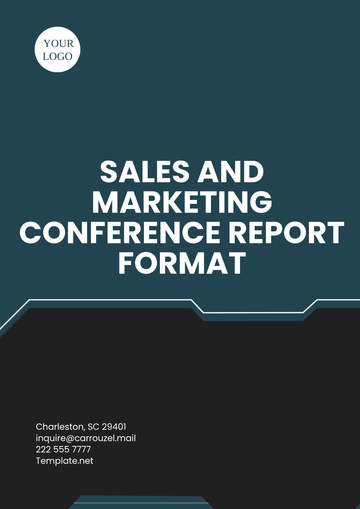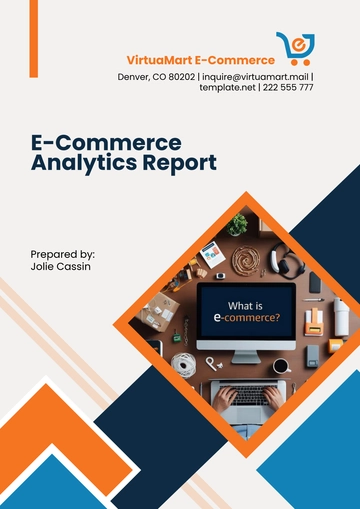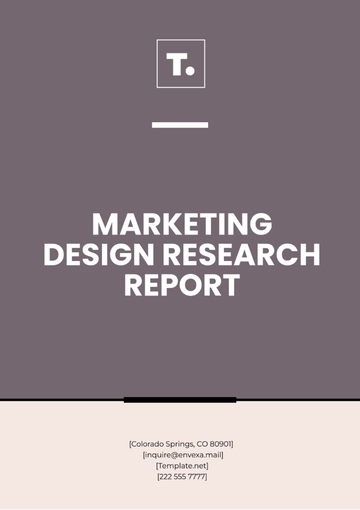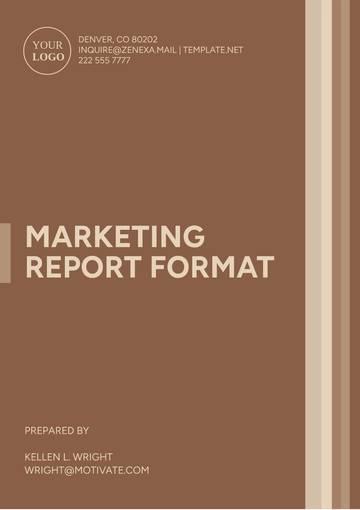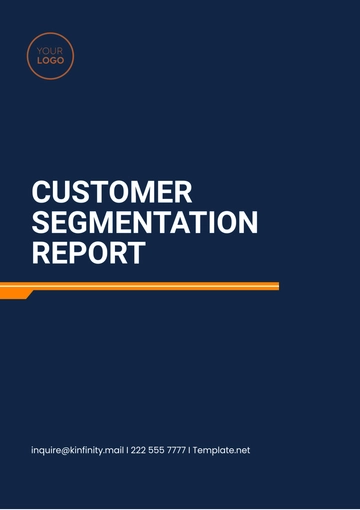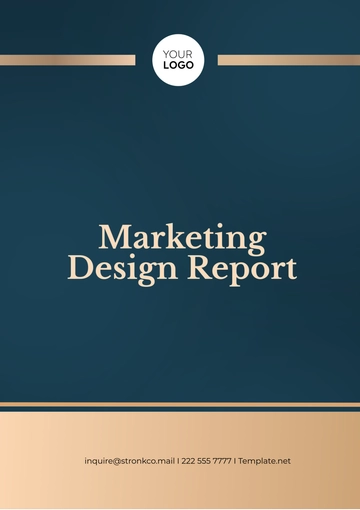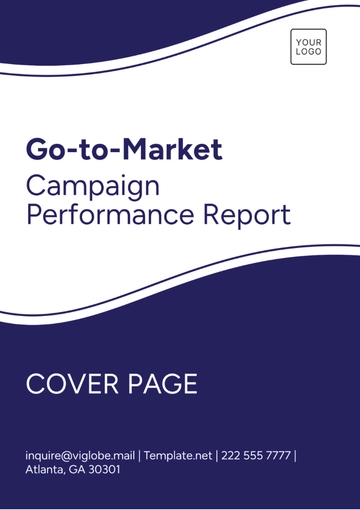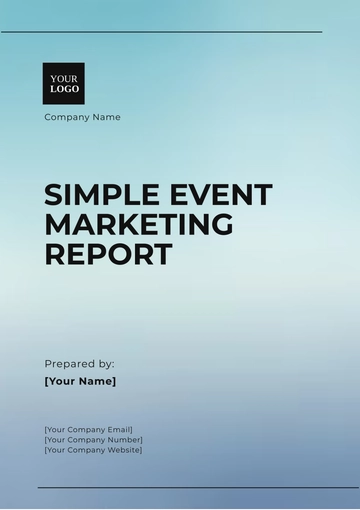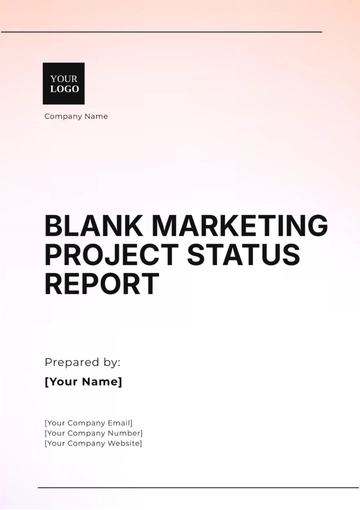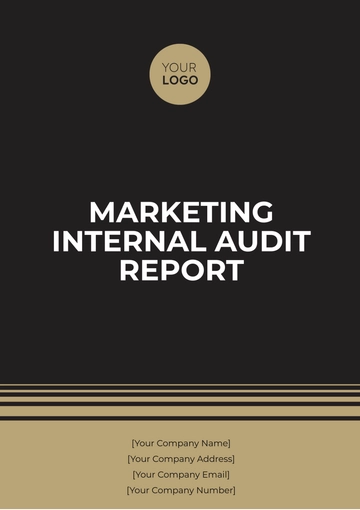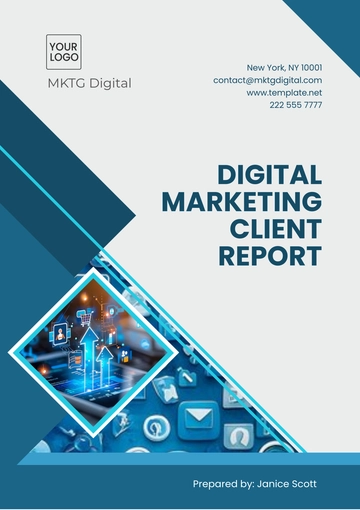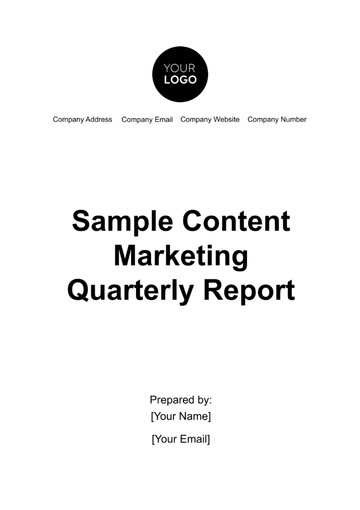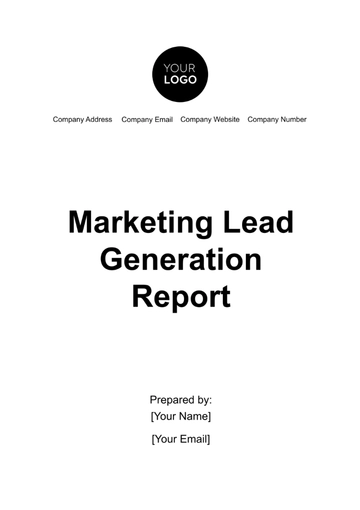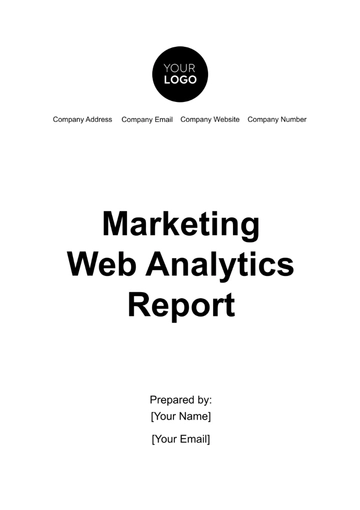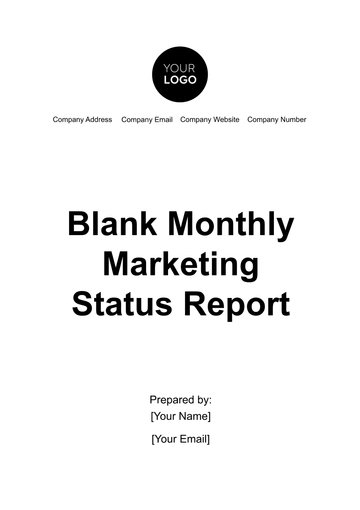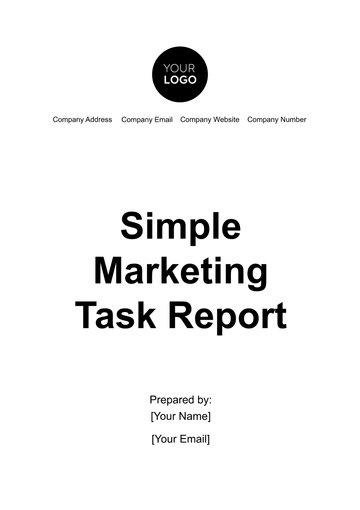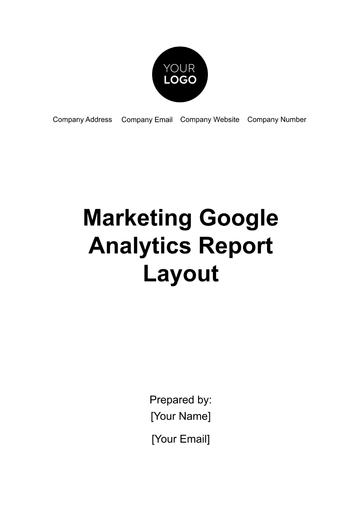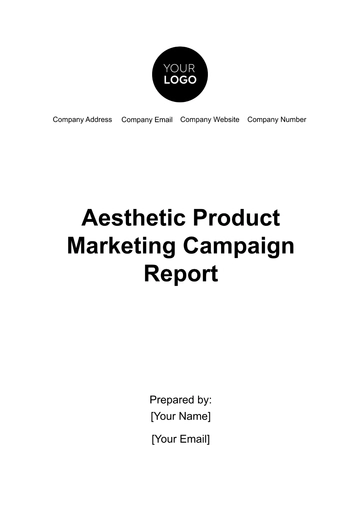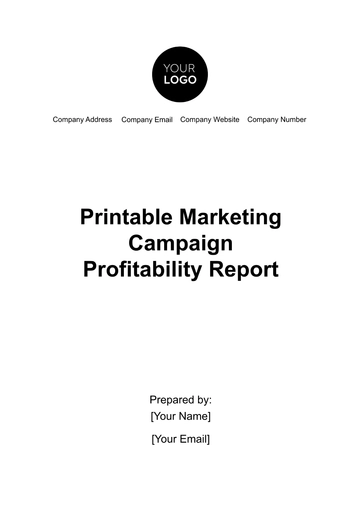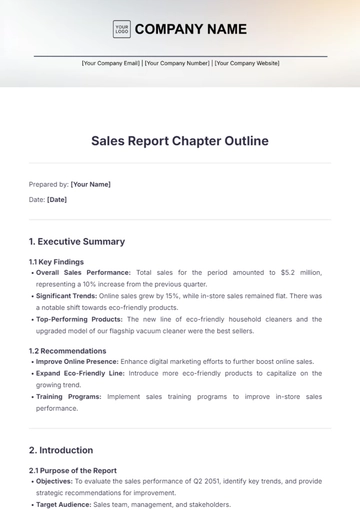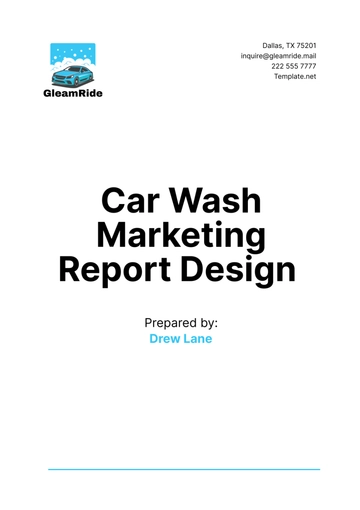Free Hotel Marketing Report
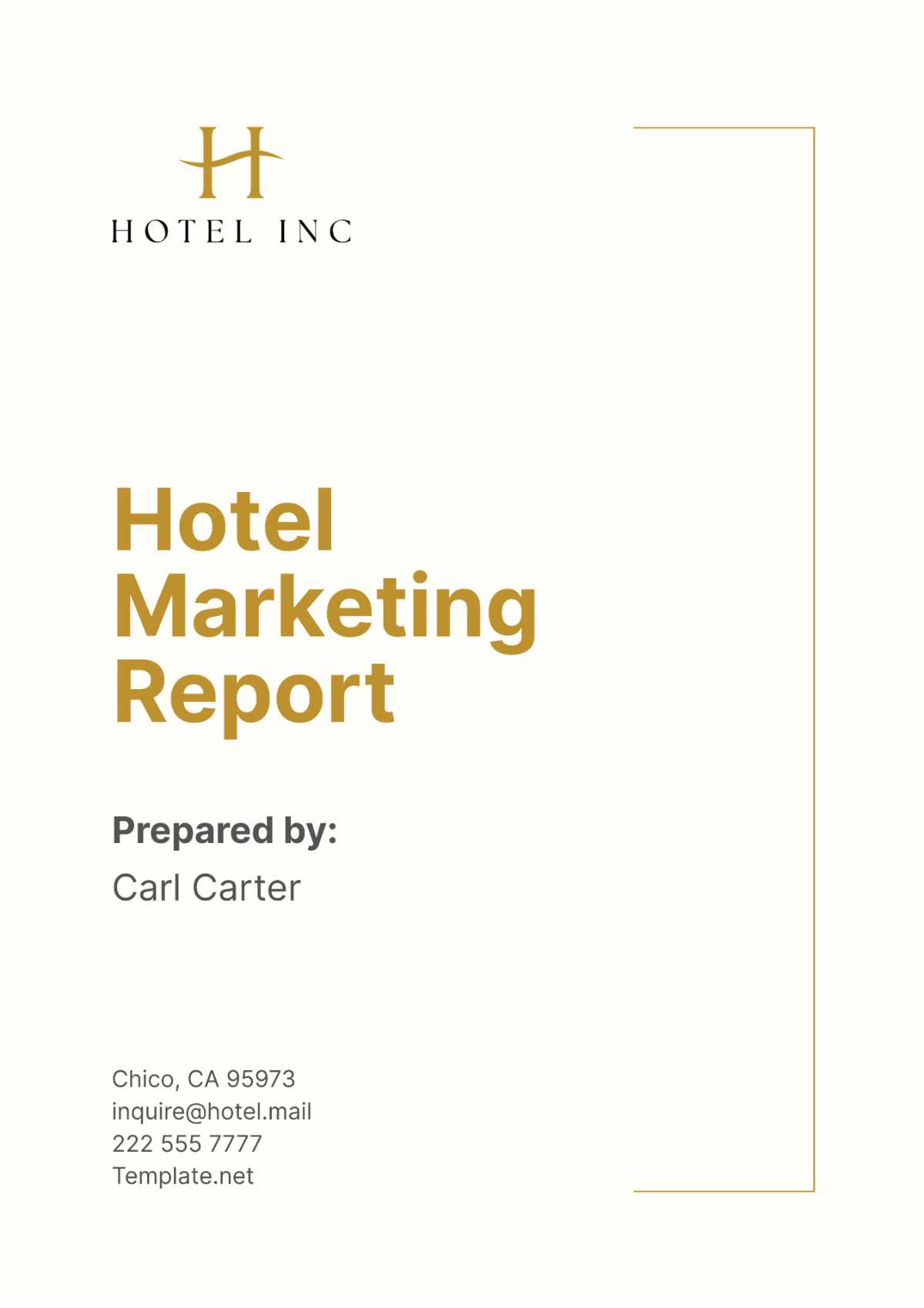
I. Executive Summary
This report delves into the marketing performance of [Your Company Name], a leading presence in the hospitality industry. The analysis aims to evaluate existing marketing strategies, measure the effectiveness of campaigns, gain insights into customer behavior, and provide actionable recommendations for enhancing overall marketing efforts.
Key findings highlight potential areas for improvement, especially in online advertising, customer retention strategies, and budget allocation. Addressing these areas could significantly enhance [Your Company Name]'s market presence and revenue generation.
II. Introduction
For over a decade, [Your Company Name] has been a beacon of hospitality, offering guests an unparalleled experience. Our dedicated marketing team has spearheaded numerous campaigns aimed at increasing occupancy rates, enhancing brand recognition, and fostering customer loyalty. This report delves into the outcomes of these initiatives, evaluating their effectiveness and impact on our overarching business objectives.
This report aims to achieve the following objectives:
Evaluate the effectiveness of past marketing campaigns in boosting occupancy rates, brand awareness, and customer loyalty.
Identify strengths and weaknesses in current marketing strategies to refine future initiatives.
Develop actionable recommendations to leverage [Your Company Name]'s unique position in the market for sustained growth and competitive advantage.
By analyzing past endeavors, we aim to identify successful tactics that can be replicated, as well as areas where improvements are needed. This introspective approach will not only enhance our marketing efforts but also reinforce [Your Company Name]'s standing as a premier destination in the hospitality industry.
III. Market Analysis
The hospitality industry has seen a significant revival, post-pandemic. With a market growth rate of [7.5]% year-over-year, there is a rising demand for premium hotel experiences. Competitors are increasingly focusing on personalized services, wellness programs, and digital innovations. [Your Company Name] occupies a strong position but faces competition from major hotel chains and boutique hotels.
Aspect | Description | Impact on [Your Company Name] |
|---|---|---|
Market Growth Rate | [7.5]% year-over-year | Indicates a growing market with potential for revenue growth. |
Customer Preferences |
| Offers opportunities for [Your Company Name] to differentiate itself and introduce new offerings. |
Competitive Landscape |
| Highlights the need for [Your Company Name] to strategically position itself and develop unique selling propositions. |
IV. Campaign Performance
Over the past year, [Your Company Name] has implemented a range of marketing campaigns spanning various platforms, including social media, search engines, and email marketing. These campaigns were designed to enhance brand visibility, engage with potential customers, and ultimately drive bookings.
Social Media Campaign: Our social media campaign achieved a commendable [5]% engagement rate, effectively reaching over [1 million] potential customers. This high level of engagement indicates that our content resonated well with our audience, leading to increased brand awareness and visibility.
Email Marketing: Our email marketing efforts yielded an open rate of [20]%, which is above the industry average. Furthermore, we achieved a conversion rate of [10]%, indicating that our email campaigns successfully motivated recipients to take action. This highlights the effectiveness of our targeted email strategies in engaging with our audience and driving conversions.
Search Engine Marketing: Our search engine marketing (SEM) efforts resulted in a click-through rate (CTR) of [3.5]%, significantly higher than the industry average. This led to a [25]% increase in web traffic, demonstrating the effectiveness of our SEM strategies in driving traffic to our website and potentially converting visitors into customers.
Our marketing campaigns have been instrumental in enhancing brand visibility, engaging with our audience, and driving conversions. Moving forward, we will continue to refine our strategies based on these insights to further optimize our marketing efforts and drive sustainable growth.
V. Sales and Revenue Impact
The marketing initiatives undertaken by [Your Company Name] have significantly influenced our sales and revenue metrics. This section examines the quantitative impact of these efforts, highlighting key performance indicators such as overall bookings, average revenue per room (ARR), and the growth of the direct booking channel.
The line graph illustrates the positive impact of our marketing initiatives on key performance metrics over four quarters. The "Overall Bookings Increase (%)" line shows a steady rise, starting at [2]% in [Q1] and reaching [12]% by [Q4]. This consistent upward trend reflects the effectiveness of our marketing campaigns in attracting more guests to our hotel. The "ARR Increase (%)" line also demonstrates significant growth, beginning at [1]% in [Q1] and climbing to 8% in Q4. This increase in average revenue per room indicates that our strategies not only drew in more guests but also encouraged higher spending per booking.
Additionally, the "Direct Booking Channel Growth (%)" line highlights the success of our efforts to boost direct bookings, starting at [3]% in [Q1] and reaching an impressive [15]% by [Q4]. This shift towards direct bookings has reduced our reliance on third-party platforms, thereby improving our profit margins. Overall, the graph visually confirms that our marketing initiatives have effectively driven growth in bookings, revenue, and direct customer engagement, contributing to a healthier financial outlook for [Your Company Name].
VI. Customer Behavior
Understanding customer behavior is crucial for tailoring our services and marketing strategies to meet their needs effectively. Recent insights reveal a growing trend towards personalized experiences, with significant segments of our guests prioritizing wellness facilities and eco-friendly practices.
The bar graph illustrates the varying preferences and behaviors of our guests. A significant [40]% of guests prioritize wellness facilities, indicating a strong trend towards health and well-being. This preference underscores the importance of maintaining and promoting our wellness amenities to attract and satisfy this segment of our clientele. Additionally, [30]% of guests show a keen interest in eco-friendly practices, reflecting a growing environmental consciousness. This suggests that our sustainability initiatives are not only valued but also a potential differentiator in a competitive market.
The graph also highlights a [20]% increase in repeat bookings, which signals robust customer loyalty. This increase suggests that our efforts in providing exceptional service and personalized experiences are yielding positive results. However, the graph also reveals that [10]% of our guests are price-sensitive, frequently comparing value propositions across different hotel platforms. This insight emphasizes the need for competitive pricing strategies and value-added offerings to retain and attract this segment. Overall, the bar graph provides a clear visual representation of the diverse preferences and behaviors of our guests, informing future marketing and service strategies.
VII. Marketing Metrics
Effective utilization of marketing budgets is crucial for achieving optimal performance and sustainable growth. By closely monitoring key performance indicators (KPIs), [Your Company Name] can gauge the success of its marketing strategies and make informed decisions for future campaigns. The following table highlights essential metrics such as Customer Acquisition Cost (CAC), Customer Lifetime Value (CLV), and Return on Marketing Investment (ROMI). These metrics provide valuable insights into the efficiency and impact of our marketing efforts, allowing us to balance spending with returns and ensuring long-term profitability and customer satisfaction.
Metric | Value | Description |
|---|---|---|
Customer Acquisition Cost (CAC) | $[0] | The average cost incurred to acquire a new customer. |
Customer Lifetime Value (CLV) | $[0] | The total revenue expected from a customer over their entire relationship with the company. |
Return on Marketing Investment (ROMI) | [0]x | The revenue generated for every dollar spent on marketing. |
VIII. Advertising Effectiveness
Evaluating the effectiveness of our advertising campaigns is crucial for optimizing our marketing strategies. This section compares the performance of our search engine marketing (SEM) ads and social media ads. The analysis focuses on key metrics such as click-through rates (CTR) and conversion rates, providing insights into how well each platform drives engagement and bookings. While SEM ads have shown higher engagement and conversion rates, social media ads, despite their high visibility, have underperformed in converting views into bookings. The following bar graph visually represents these metrics, highlighting the areas where our advertising efforts excel and where improvements are needed.
The bar graph titled "Advertising Effectiveness" provides a visual comparison of the performance of our search engine marketing (SEM) ads versus social media ads. The data reveals that SEM ads have a click-through rate (CTR) of [3.5]%, significantly higher than the [1.5]% CTR for social media ads. This indicates that users are more likely to engage with our ads when they appear in search engine results compared to social media platforms. Furthermore, the conversion rate for SEM ads stands at [2.5]%, while social media ads have a lower conversion rate of [1.0]%. This suggests that SEM ads are more effective in turning user engagement into actual bookings.
Despite the high visibility of social media ads, their lower conversion rates highlight a need for more targeted and compelling ad copy to better capture and convert this audience. The lower performance on social media indicates potential areas for improvement, such as refining audience targeting, enhancing ad creativity, or offering more personalized promotions. In contrast, the strong performance of SEM ads underscores their importance in our marketing mix and suggests a potential area for increased investment. By analyzing these metrics, [Your Company Name] can optimize future advertising efforts to maximize engagement and conversions across both platforms.
X. Budget Analysis
Understanding the allocation and expenditure of our marketing budget is essential for effective financial management and strategy refinement. This section presents a detailed analysis of our budget across various marketing categories, including social media, search engine marketing, email campaigns, and influencer partnerships. The table below highlights the allocated budget, actual spending, and variances, providing insights into areas of overspending and underspending, and helping us optimize future budget allocations to enhance our marketing efficiency.
Category | Allocated Budget | Spent Budget | Variance |
|---|---|---|---|
Social Media | $100,000 | $90,000 | $10,000 |
Search Engine Marketing | $150,000 | $130,000 | $20,000 |
Email Campaigns | $50,000 | $45,000 | $5,000 |
Influencer Partnerships | $70,000 | $75,000 | ($5,000) |
X. SWOT Analysis
Conducting a SWOT analysis is crucial for understanding the strengths, weaknesses, opportunities, and threats that [Your Company Name] faces in the competitive hospitality market. This comprehensive analysis helps in identifying areas where we excel, potential improvements, opportunities for growth, and external challenges that may impact our success. The insights derived from this analysis will inform strategic decisions and help in developing targeted actions to enhance our market position and operational efficiency.
Strengths | Weaknesses | Opportunities | Threats |
|---|---|---|---|
|
|
|
|
This SWOT analysis provides a clear picture of [Your Company Name]'s current market standing, highlighting areas of strength to build upon, weaknesses to address, opportunities to seize, and threats to mitigate. This holistic view is essential for developing effective strategies and maintaining a competitive edge in the dynamic hospitality industry.
XI. Recommendations
To sustain and enhance our market position, the following recommendations are proposed:
Increase investment in digital marketing to improve online visibility and engagement.
Develop personalized marketing campaigns to cater to niche segments such as wellness and eco-conscious travelers.
Expand partnerships with influencers to enhance brand credibility and reach.
Optimize budget allocation based on campaign performance analytics to maximize ROI.
Implementing these strategies will not only fortify our current market position but also open new avenues for growth, ensuring long-term success for [Your Company Name].
- 100% Customizable, free editor
- Access 1 Million+ Templates, photo’s & graphics
- Download or share as a template
- Click and replace photos, graphics, text, backgrounds
- Resize, crop, AI write & more
- Access advanced editor
Measure marketing efforts with the Hotel Marketing Report Template from Template.net. This editable and customizable document simplifies creating comprehensive reports for hotel marketing campaigns. Tailored for the industry, it ensures clarity and professionalism in presenting campaign performance, ROI, and next steps. Editable in our Ai Editor Tool for seamless customization to meet your specific marketing report needs.
You may also like
- Sales Report
- Daily Report
- Project Report
- Business Report
- Weekly Report
- Incident Report
- Annual Report
- Report Layout
- Report Design
- Progress Report
- Marketing Report
- Company Report
- Monthly Report
- Audit Report
- Status Report
- School Report
- Reports Hr
- Management Report
- Project Status Report
- Handover Report
- Health And Safety Report
- Restaurant Report
- Construction Report
- Research Report
- Evaluation Report
- Investigation Report
- Employee Report
- Advertising Report
- Weekly Status Report
- Project Management Report
- Finance Report
- Service Report
- Technical Report
- Meeting Report
- Quarterly Report
- Inspection Report
- Medical Report
- Test Report
- Summary Report
- Inventory Report
- Valuation Report
- Operations Report
- Payroll Report
- Training Report
- Job Report
- Case Report
- Performance Report
- Board Report
- Internal Audit Report
- Student Report
- Monthly Management Report
- Small Business Report
- Accident Report
- Call Center Report
- Activity Report
- IT and Software Report
- Internship Report
- Visit Report
- Product Report
- Book Report
- Property Report
- Recruitment Report
- University Report
- Event Report
- SEO Report
- Conference Report
- Narrative Report
- Nursing Home Report
- Preschool Report
- Call Report
- Customer Report
- Employee Incident Report
- Accomplishment Report
- Social Media Report
- Work From Home Report
- Security Report
- Damage Report
- Quality Report
- Internal Report
- Nurse Report
- Real Estate Report
- Hotel Report
- Equipment Report
- Credit Report
- Field Report
- Non Profit Report
- Maintenance Report
- News Report
- Survey Report
- Executive Report
- Law Firm Report
- Advertising Agency Report
- Interior Design Report
- Travel Agency Report
- Stock Report
- Salon Report
- Bug Report
- Workplace Report
- Action Report
- Investor Report
- Cleaning Services Report
- Consulting Report
- Freelancer Report
- Site Visit Report
- Trip Report
- Classroom Observation Report
- Vehicle Report
- Final Report
- Software Report
